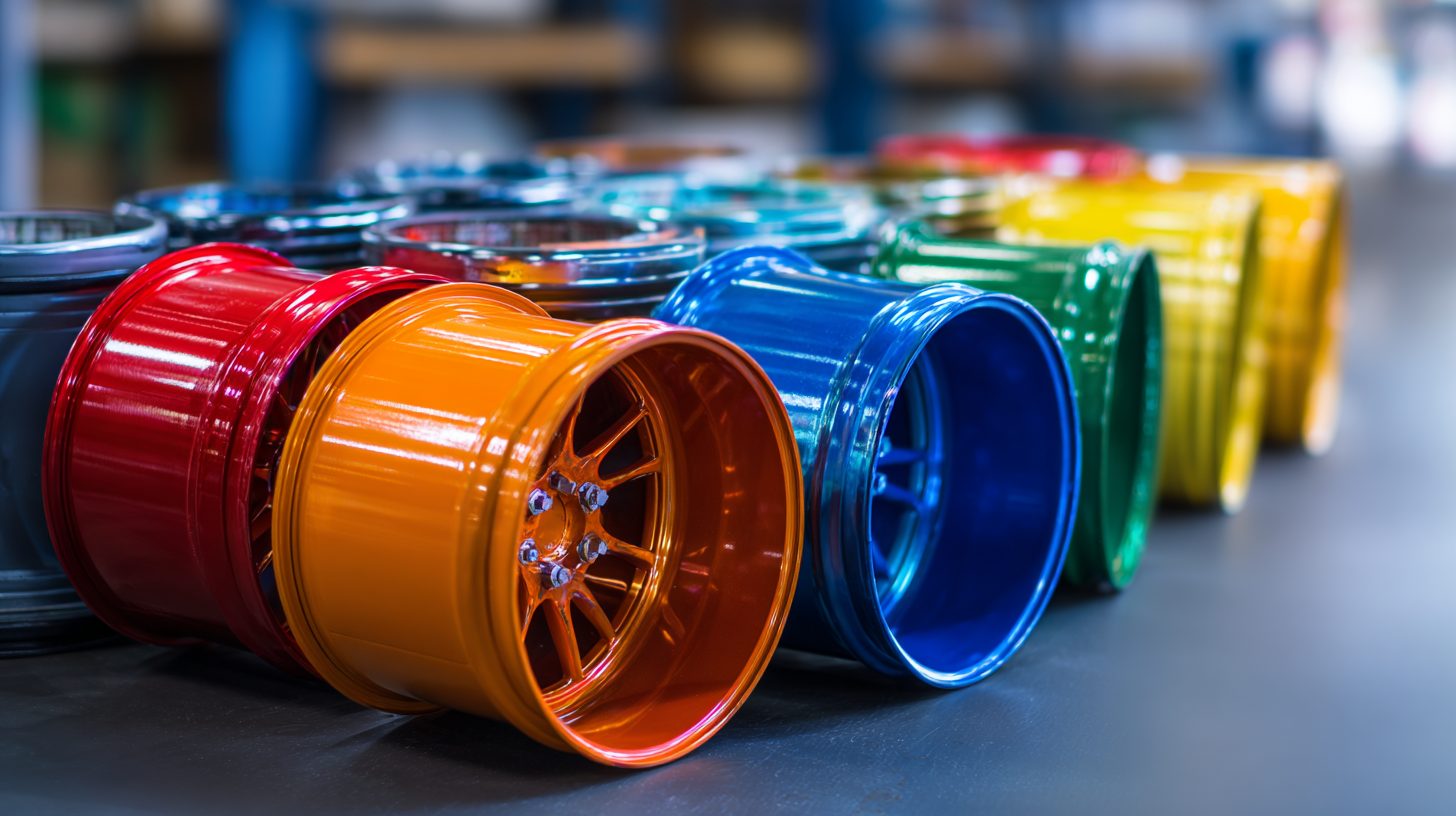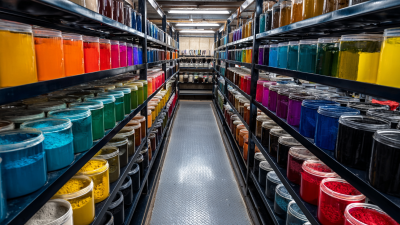Dip powder coating is rapidly gaining traction in various industries due to its numerous advantages and versatility. As a modern finishing process, this technique not only enhances the aesthetic appeal of products but also significantly improves their durability and resistance to environmental factors. This guide delves into the key benefits of dip powder coating, illustrating how it can transform everyday items and industrial components alike.
In the following sections, we will explore the technology behind dip powder coating, its applications across different sectors, and why it is becoming the preferred choice for manufacturers and consumers. From understanding the process to recognizing its environmental benefits, this comprehensive resource aims to equip you with the knowledge needed to leverage dip powder coating for your specific needs. Whether you are a business leader looking to improve your product offerings or a consumer curious about finishing methods, this guide will provide valuable insights into the world of dip powder coating.

Dip powder coating has gained significant popularity in recent years due to its long-lasting results and versatile applications. This process involves dipping items into a powder coating material, which is then cured with heat to create a durable, protective finish. According to industry reports, dip powder coatings offer superior resilience against scratching, chipping, and fading compared to traditional paint, making it an ideal choice for various surfaces including nails and automotive exteriors.
In the beauty sector, dip powder manicures are lauded for their extended wear, often lasting between three to five weeks without chipping. This longevity is due to the unique application method, which integrates layers of colored powder and adhesive. Recent surveys among nail artists reveal that this technique not only offers an array of striking design options but also enables a healthier nail alternative compared to other manicures. With the right at-home dip powder kits, users can achieve salon-quality results, reflecting the rising trend of DIY beauty treatments amidst growing consumer interest in personalized nail art.

Dip powder coating and traditional painting methods each have unique strengths that cater to different industrial needs. Dip powder coating is a process where parts are submerged in a fluidized bed of powder, allowing for an even and consistent application. This method results in a thicker, more durable coating compared to traditional spray painting, which often relies on solvents that can lead to uneven layers and requires additional time for drying. The absence of solvents in dip powder coatings also contributes to a more environmentally friendly process.
Another significant advantage of dip powder coating is its excellent adhesion and resistance to chipping, fading, and scratching. It is particularly beneficial for complex geometries, ensuring that hard-to-reach areas are thoroughly coated. Traditional painting methods, while versatile and widely used, tend to struggle with consistency on intricate shapes and often necessitate multiple coats for adequate coverage. Consequently, for industries demanding robust protective finishes and aesthetic appeal, dip powder coating emerges as a superior option, streamlining production while enhancing the longevity of the coated parts.
Dip powder coating is increasingly recognized for its cost-effectiveness and long-term savings, making it an attractive option for various industries. One of the primary benefits of dip powder coating is its durability, providing a robust layer of protection against corrosion, which can significantly extend the lifespan of coated products. This durability reduces maintenance and replacement costs over time, offering substantial savings for businesses that require high-performance coatings for their equipment or infrastructure.
**Tips:** To maximize the cost-effectiveness of dip powder coating, consider evaluating the specific conditions your products will face, such as exposure to harsh environments. This assessment will help determine the most suitable powder materials and application techniques. Additionally, investing in quality coating services can lead to better finishes and lower long-term costs due to fewer repairs and reapplications.
Furthermore, the initial investment in dip powder coating may be higher than traditional methods, but the long-term savings from reduced maintenance and the longevity of the coating often outweigh these costs. By adopting dip powder coating, companies can align their operations with sustainable practices, contributing to the overall goal of reducing industrial carbon footprints while simultaneously benefiting from economical advantages.
This chart illustrates the long-term savings associated with dip powder coating compared to traditional coating methods over a span of five years. It highlights the reduction in maintenance costs, material usage, and labor expenses, making dip powder coating a preferred choice for many industries.
Dip powder coating presents a compelling environmentally friendly option for various industries, aligning perfectly with the growing demand for sustainable practices. As the global corrosion protective coatings market is projected to expand from USD 11.22 billion in 2025 to an estimated USD 15.70 billion by 2033, the shift towards eco-friendly alternatives is becoming increasingly clear. Dip powder coating not only offers superior protection against corrosion but also minimizes waste by utilizing a closed-loop system that recycles overspray. This method slashes the use of volatile organic compounds (VOCs), making it a greener choice compared to traditional liquid coatings.
Moreover, recent innovations in sustainable materials, including the development of anticorrosive coatings based on sustainable polymers, are enhancing the effectiveness and environmental profile of dip powder coatings. The textile and fashion industries are also exploring novel dyeing methods that reduce environmental impact, indicating a broader movement within industrial sectors towards sustainable solutions. The integration of such methods not only addresses corrosion challenges but also supports global efforts for a more sustainable society, reflecting an increasing commitment to environmentally responsible practices across various manufacturing processes.
| Benefit/Feature | Description | Environmental Impact | Applications |
|---|---|---|---|
| Durability | Resistant to scratches, chipping, and fading. | Water-based and low VOC emissions. | Automotive parts, industrial equipment. |
| Efficiency | Less overspray and waste compared to liquid coatings. | Reduces chemical waste and energy consumption. | Furniture, outdoor equipment. |
| Variety of Finishes | Wide range of colors and textures available. | Uses eco-friendly dyes and pigments. | Electronics, appliances. |
| Enhanced Adhesion | Improved bonding to various substrates. | Generated by heat curing process. | Construction, manufacturing industry. |
Dip powder coating has found its place in various industries due to its superior finish and durability. Key sectors benefiting from this application include automotive, manufacturing, and furniture. In the automotive industry, dip powder coating is utilized to enhance the aesthetic appeal and longevity of car parts, providing a tough layer that resists scratches and corrosion. This application not only improves the vehicle's overall look but also extends the life of components exposed to harsh environments.
Real-world case studies illustrate the effectiveness of dip powder coating in manufacturing. For instance, a leading outdoor furniture company adopted this technique to coat metal chairs and tables, resulting in products that withstand extreme weather conditions while maintaining vibrant colors. Additionally, manufacturers of industrial equipment have leveraged dip powder coating to ensure their products are rugged and resilient against wear and tear, leading to reduced maintenance costs and increased customer satisfaction. Such applications underscore the versatility and reliability of dip powder coating across various sectors.







